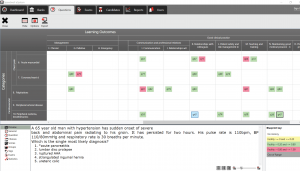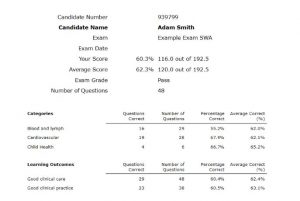- +44 (0)1223 851703
- info@speedwellsoftware.com
Here we explore how using question bank groups aligned with your learning outcomes can help ensure your exams meet your required criteria.
The outcome based education model has been widely adopted throughout many university departments – from maths, economics and engineering to medicine and science. Essentially it involves the clear specification of the end product of training and the associated learning outcomes – and curriculum planning flows from these outcomes. If you like, the reverse planning model involves course content and teaching, learning and assessment stemming and aligning with expected learning outcomes.
Using exam management software that enables you to align learning outcomes with your assessment is a handy essential when running any outcome based assessment framework. Speedwell’s eSystem exam management software enables you to review your assessments, candidates and entire question bank against your learning outcomes.
It does this through the use of groups – within each instance of the eSystem, you can set up as many banks as you like. Many departments simply run two banks – a live question bank and development question bank. The construction of a series of groups and subgroups allows you to set up a framework with enough granularity to see how your questions align with learning outcomes. All questions belong to as many groups as you need – so a medical school may have groups related to medical interests, such as internal medicine and paediatrics. There may also be a series of groups related to competencies such as clinical reasoning, history taking and assessment and management of patients. And another series of groups could be for the assessment team such as measurable objectives, essential objectives and optional objectives.
The beauty of using groups in your question bank as a framework to support outcome based education really comes into its own in two main instances – preparing exams using blueprinting and completing post assessment reports for both candidates and assessors.
With each question allocated to a group and the application of filters, you can blueprint your exams prior to finalising them. This lets you clearly see where there are gaps in your assessment – in terms of meeting specific learning outcomes or in terms of difficulty or any other filter you apply. Having this view, prior to assessments being finalised allows you to see how well your assessment aligns with your stated outcomes. And you simply re-blueprint as you make adjustments to the exam until you are happy with it.

Post assessment reports for candidates and assessors easily include performance measures against any groups that you specify. You can easily prepare candidate reports that show the candidates score for specific learning outcomes (i.e. groups) and the average from that exam, for example. This kind of bench marked feedback feeds directly into candidates’ self-directed learning. For examiners and assessors being able to review the performance of a class or cohort against learning outcomes, brings benefits such as being able to compare cohorts’ performance over time, the performance of that exam and to identify the areas of the curriculum that require more work due to low candidate understanding.

Outcome based education aligns outcomes with content, delivery and assessment. You can easily see how well your assessments align with your outcomes when using question bank groups to provide that framework. Groups and learning outcomes work hand-in-hand.
Get in touch today if you would like to see how eSystem software takes some of the heavy lifting out of aligning assessment with outcomes.










